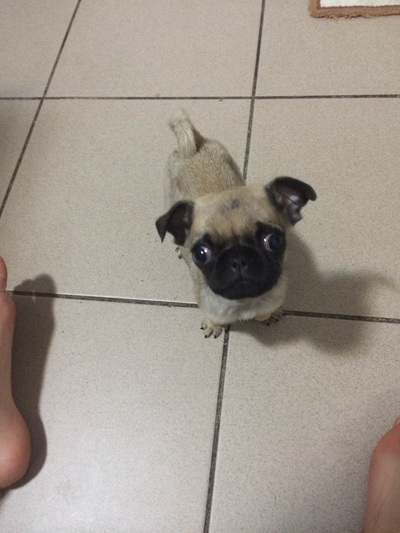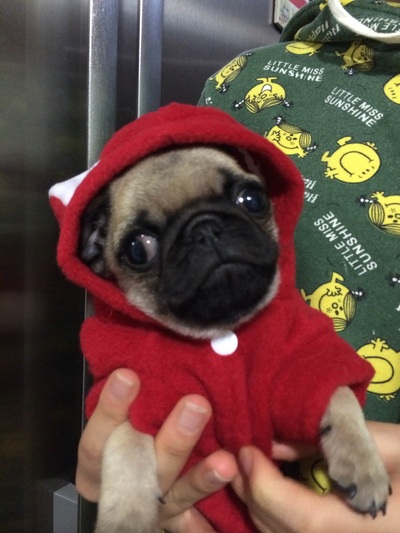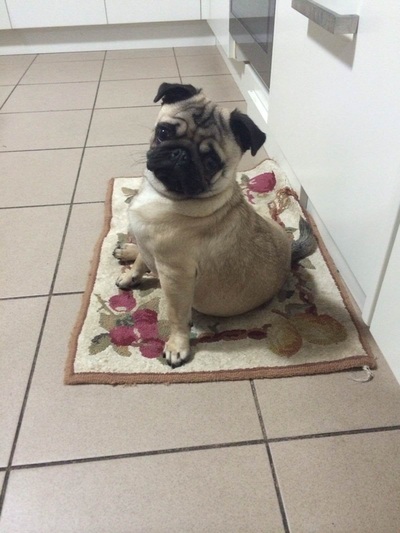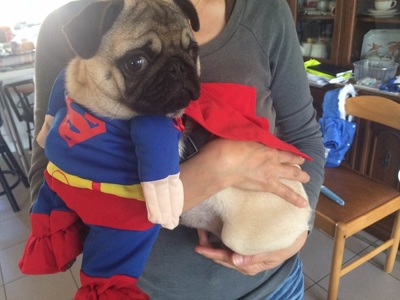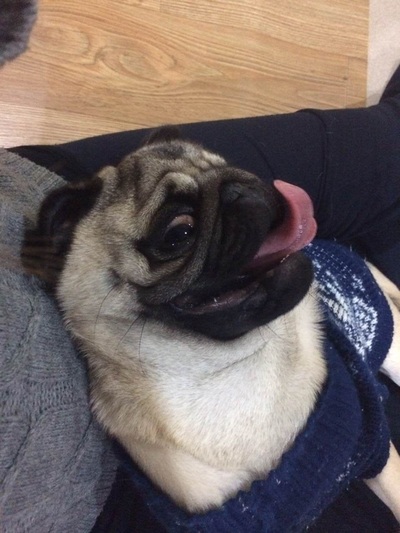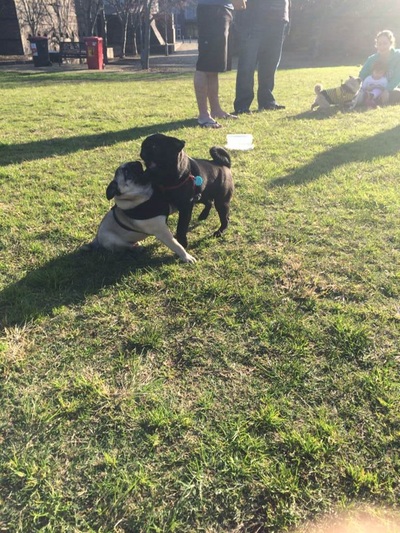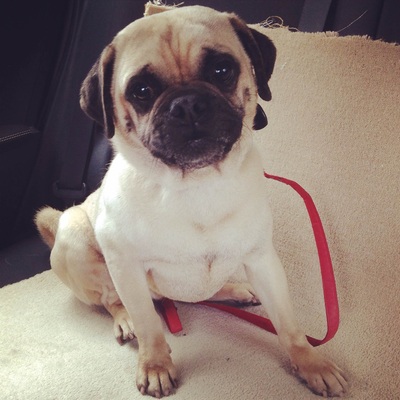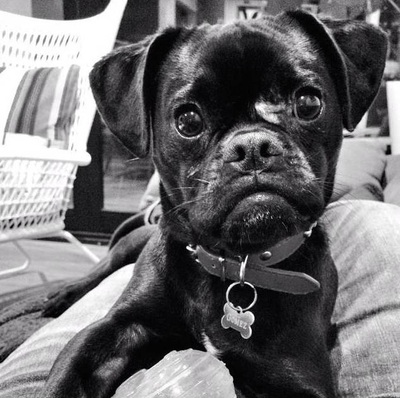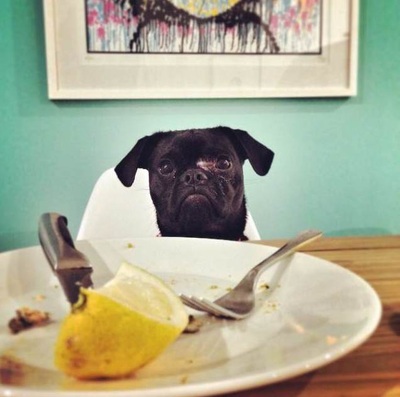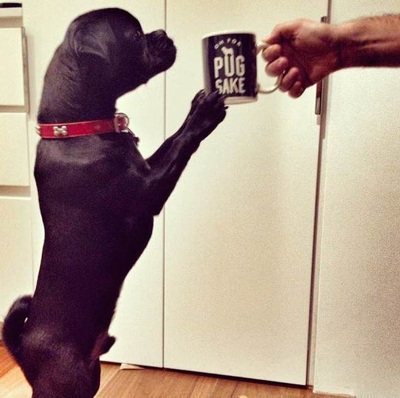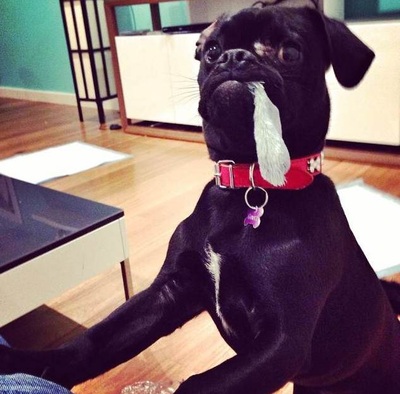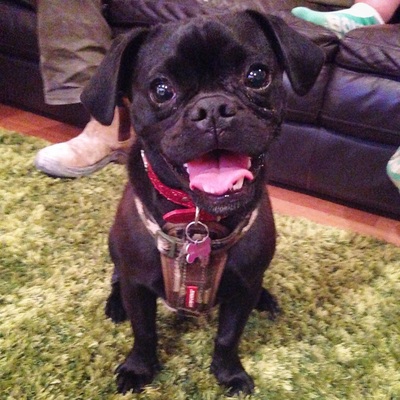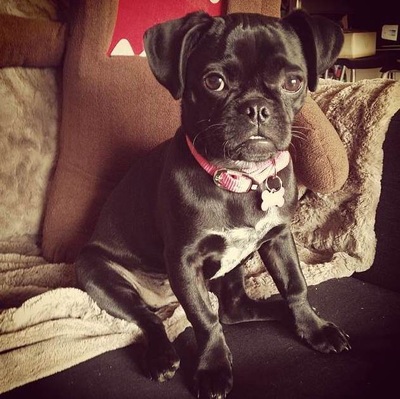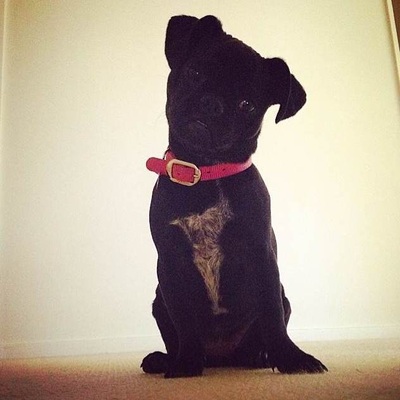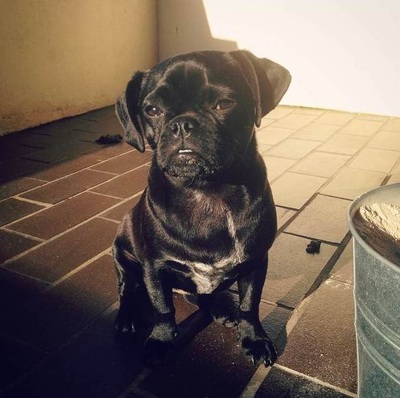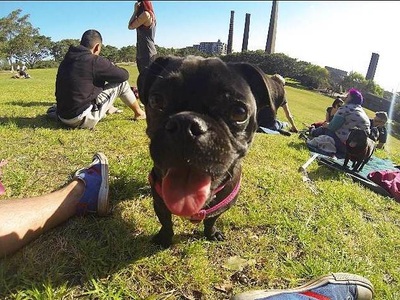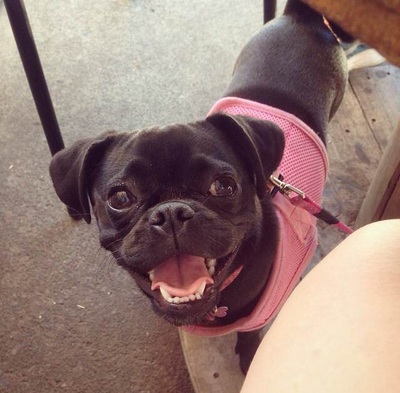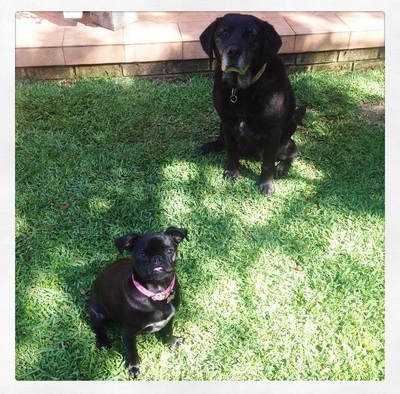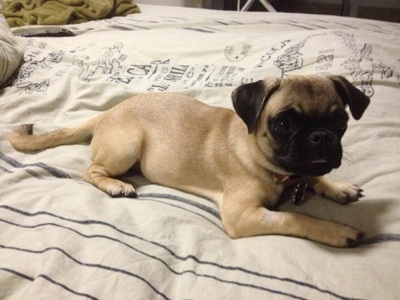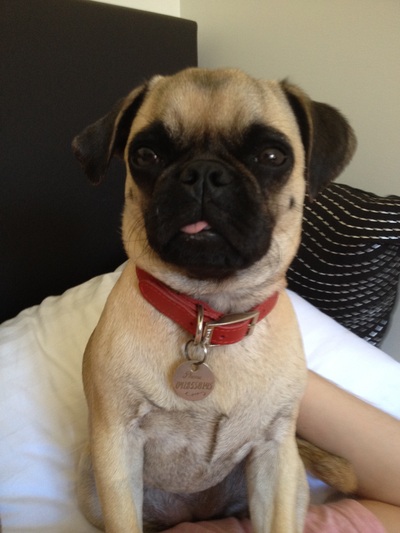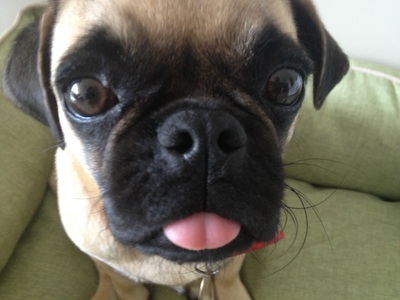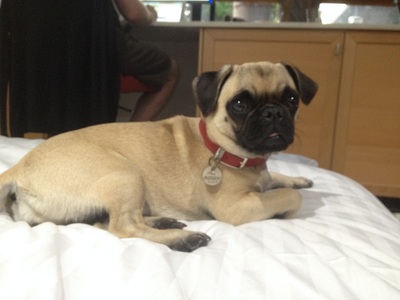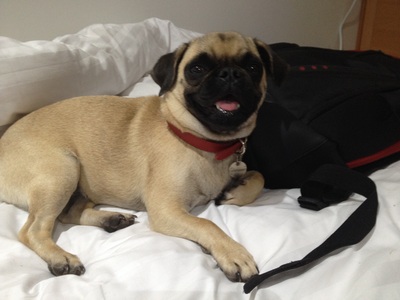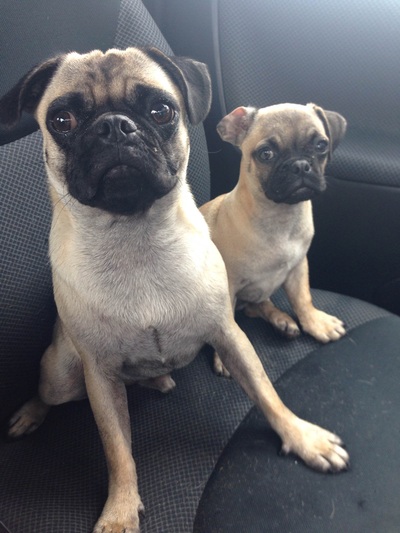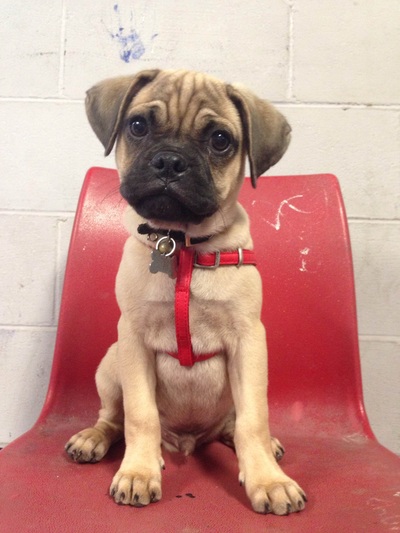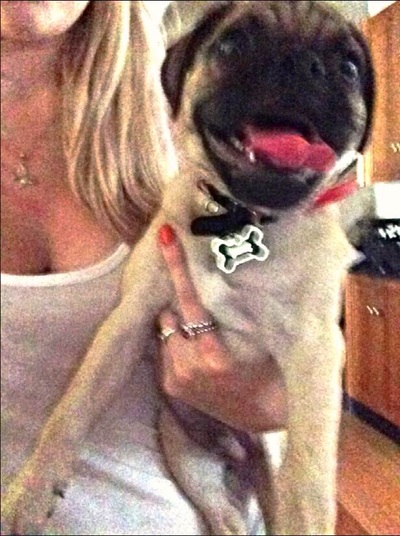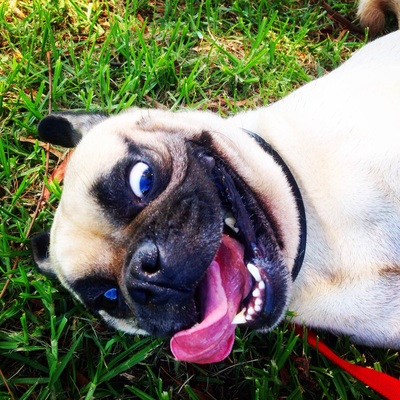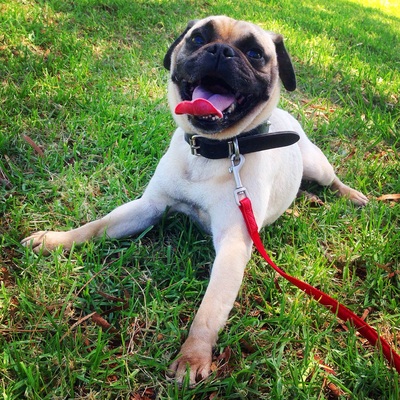Pug
See below for photos of some of our Pug puppies now with their new families.
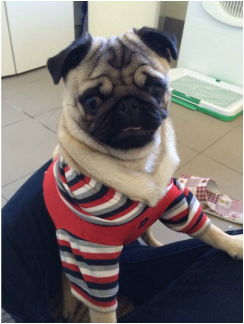 'Jjangu'
'Jjangu'
Breed: Pug
Temperament: playful and lively, yet easy going companion dogs.
Size: 8 - 12kg (weight may vary)
Lifespan: 10 - 15 years
Maintenance: low
Recommended for: families with children, elderly companions and those in between.
History of the Pug
The history of the Pug dates further back than many other pure bred dogs, and there is great debate as to when the breed truly originated, however some reports state as far back as 400 BC. Originating in Asia, the Pug earned a great following with Europeans. Napoleon's wife, Josephine, owned and depended on her Pug named 'Fortune', who was never far from her side. The breed was also popular among members of royalty, and is still today treasured by many.
Personality, characteristics and temperament
The Pug is a low maintanance, happy-go-lucky companion. Your Pug will be happiest when by your side, whether it by at the park, by the beach, or snoozing on the lounge. Affectionate and exuberant, be sure to let them know who is boss from the beginning. Easy to train, so best avoid letting your Pug take over the house.
Pugs have personality plus, and have well earned popularity. The breeds large following can be seen at its best at Pug Meets, held once a month in Sydney - a great place to go to see a wide range of Pugs and get to experience the breed, and chat to owners. Be sure not to over exert your Pug though, and keep them cool in the summer and warmer weather. That cute little squishy face, was not made to be left out in the sun on hot summer days! Repulsive to some and adorable to others, Pugs are also known to snore and fart!
Grooming your Pug
Minimal grooming is required for the Pug. Wipe over the face, and under the eyes with a towel to clean out those wrinkles. Rarely requires bathing, a good brush and once over with canine cologne will keep them fresh.
Training your Pug
Pugs can be smarter than you think, and stubborn at times if you let them. Be calm yet assertive with your training methods, and you will have great success. Willing to please, begin obedience training as a puppy and manners should follow through. Very food driven, never leave the treat jar at ground level!
Temperament: playful and lively, yet easy going companion dogs.
Size: 8 - 12kg (weight may vary)
Lifespan: 10 - 15 years
Maintenance: low
Recommended for: families with children, elderly companions and those in between.
History of the Pug
The history of the Pug dates further back than many other pure bred dogs, and there is great debate as to when the breed truly originated, however some reports state as far back as 400 BC. Originating in Asia, the Pug earned a great following with Europeans. Napoleon's wife, Josephine, owned and depended on her Pug named 'Fortune', who was never far from her side. The breed was also popular among members of royalty, and is still today treasured by many.
Personality, characteristics and temperament
The Pug is a low maintanance, happy-go-lucky companion. Your Pug will be happiest when by your side, whether it by at the park, by the beach, or snoozing on the lounge. Affectionate and exuberant, be sure to let them know who is boss from the beginning. Easy to train, so best avoid letting your Pug take over the house.
Pugs have personality plus, and have well earned popularity. The breeds large following can be seen at its best at Pug Meets, held once a month in Sydney - a great place to go to see a wide range of Pugs and get to experience the breed, and chat to owners. Be sure not to over exert your Pug though, and keep them cool in the summer and warmer weather. That cute little squishy face, was not made to be left out in the sun on hot summer days! Repulsive to some and adorable to others, Pugs are also known to snore and fart!
Grooming your Pug
Minimal grooming is required for the Pug. Wipe over the face, and under the eyes with a towel to clean out those wrinkles. Rarely requires bathing, a good brush and once over with canine cologne will keep them fresh.
Training your Pug
Pugs can be smarter than you think, and stubborn at times if you let them. Be calm yet assertive with your training methods, and you will have great success. Willing to please, begin obedience training as a puppy and manners should follow through. Very food driven, never leave the treat jar at ground level!
